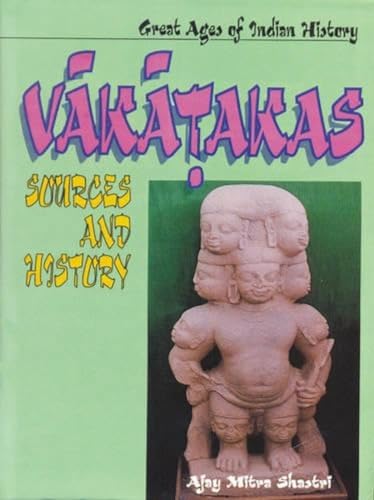great ages indian history von shastri ajay (1 Ergebnisse)
Produktart
- Alle Produktarten
- Bücher (1)
- Magazine & Zeitschriften
- Comics
- Noten
- Kunst, Grafik & Poster
- Fotografien
- Karten
-
Manuskripte &
Papierantiquitäten
Zustand
- Alle
- Neu
- Antiquarisch/Gebraucht
Einband
- alle Einbände
- Hardcover
- Softcover
Weitere Eigenschaften
- Erstausgabe
- Signiert
- Schutzumschlag
- Angebotsfoto
- Kein Print-on-Demand
Land des Verkäufers
Verkäuferbewertung
-
Great Ages of Indian History: Vakatakas: Sources and History (Reprint edition)
Verlag: Aryan Books International, 2022
ISBN 10: 8173051232ISBN 13: 9788173051234
Anbieter: Vedams eBooks (P) Ltd, New Delhi, Indien
Buch
Hardcover. Zustand: New. The Indian subcontinent was dominated by the Imperial Guptas and Vakatakas for some 2 centuries beginning mid-third century AD, and this period is rightly styled Vakataka-Gupta Age which formed the classical phase of early Indian history. A reappraisal of Vakataka history has become imperative in the light of the recent epigraphical and numismatic finds with many of which the author was closely associated. And in the perspective of these finds a fresh assessment of the extant evidence was also felt essential, and this twin exercise is aimed at in the present work which sheds fresh light on many a baffling issue. To mention only a few conclusions, the original Vakataka territory lay in the Vindhyan region of Central India wherefrom they immigrated about 300 AD under Pravara Sena I into Vidarbha to spread their wings far and wide; Kanchanaka, modern Nachna, was their first dynastic capital, there being no mention of Purika in the Vakataka context in the Puranas; the Vindhyan region continued under the dynasty till the time of Prithivi Shena I; Damodara Sena and Pravara Sena. II were two distinct personages who ascended the throne one after another; Narendra Sena`s accession was disputed and towards the close of his reign he was deprived of his kingdom by his Vatsagulma cousins; his queen Ajjhitabhattarika was probably a Kadamba princess; Prithivi Shena II recovered the lost territory besides keeping the Nalas at bay; the Vatsagulma branch of the dynasty aspired to spread its wings in south and west from its very inception; Sarva Sena II interfered into internal affairs of the Kadambas of Vanavasi and put his protà gà Simhavarman on Kadamba throne and the former`s son Deva Sena extended his kingdom at the cost of Kadambas right up to Bidar region of Karnataka besides trying to destabilise his Pravarapura cousins; both the branches ended their political career owing to the growing ambitions of their erstwhile vassals and foes from south and west; Dandin`s Dasa-kumara-charita has no bearing on Vakataka end. All the source-material, epigraphic and numismatic, has been critically analysed at first to prepare the stage for a balanced historical outline.


